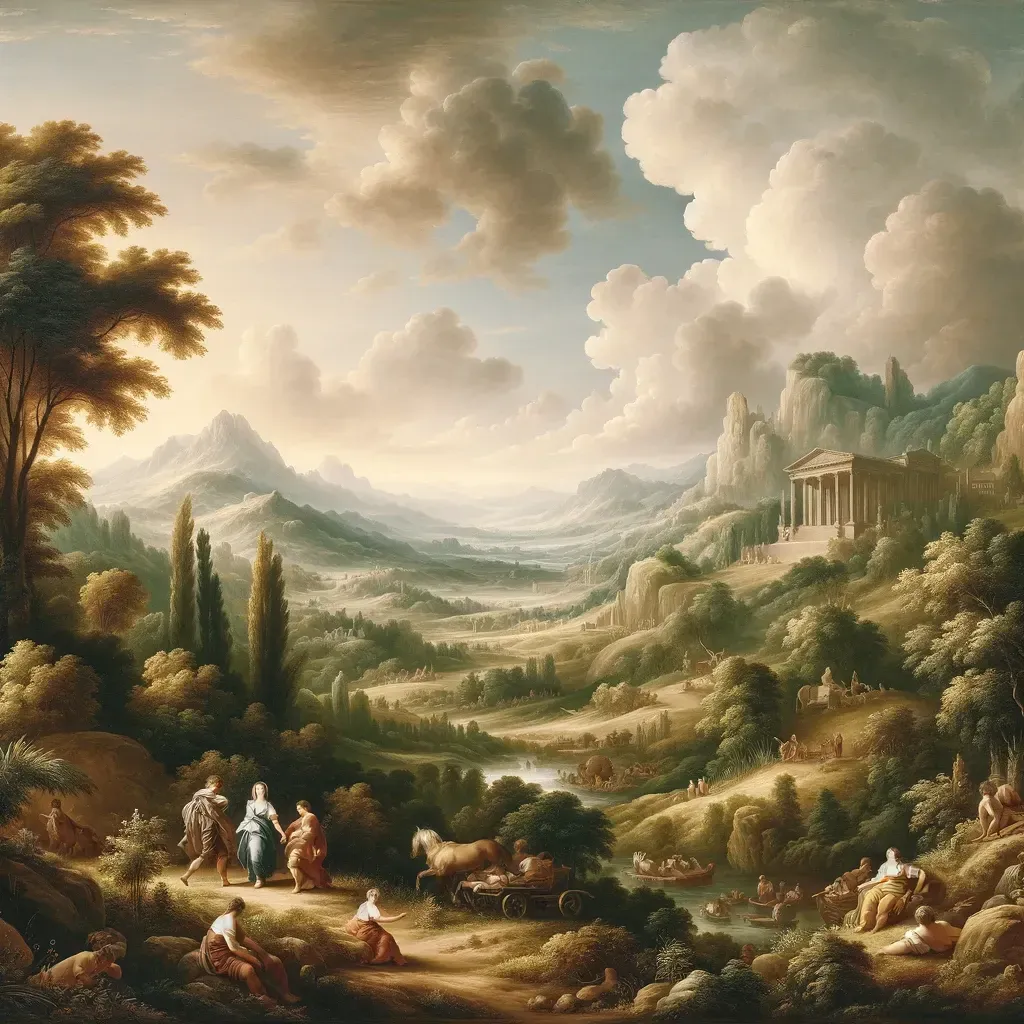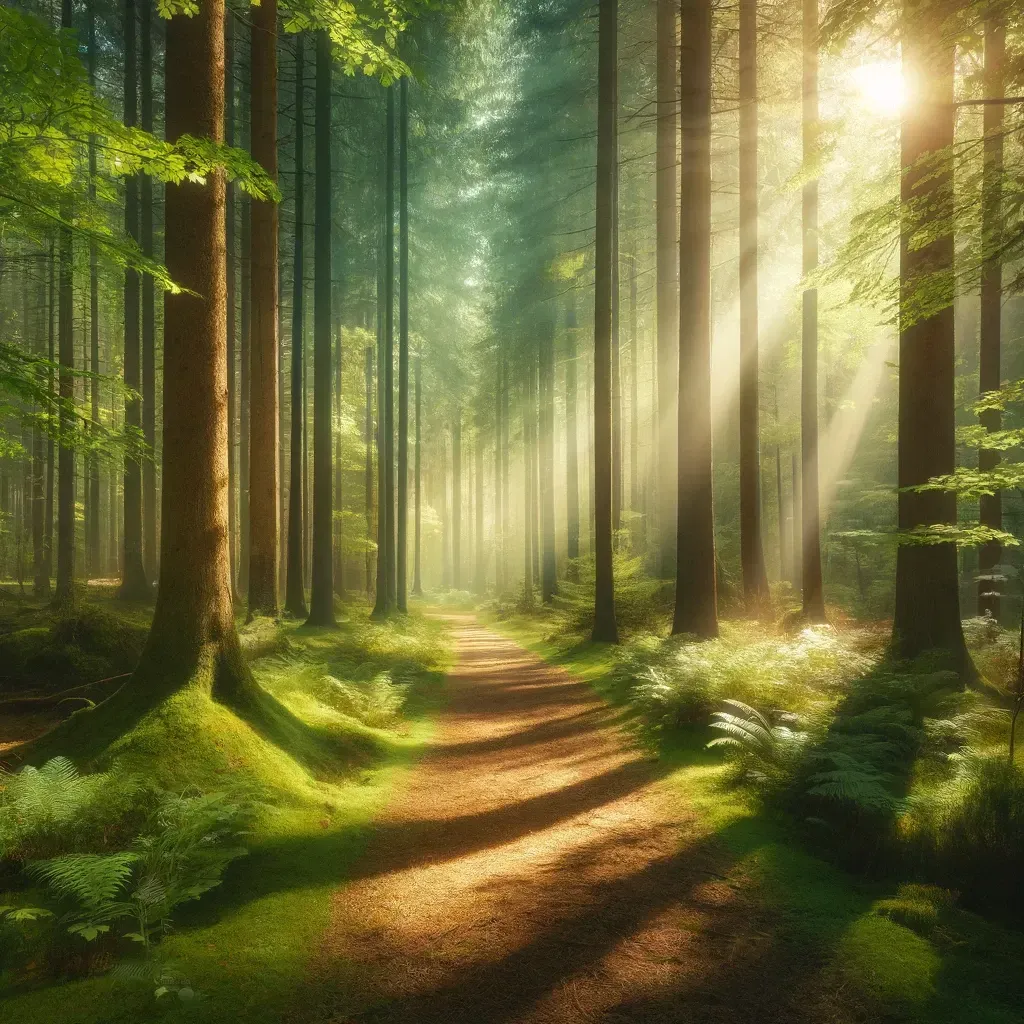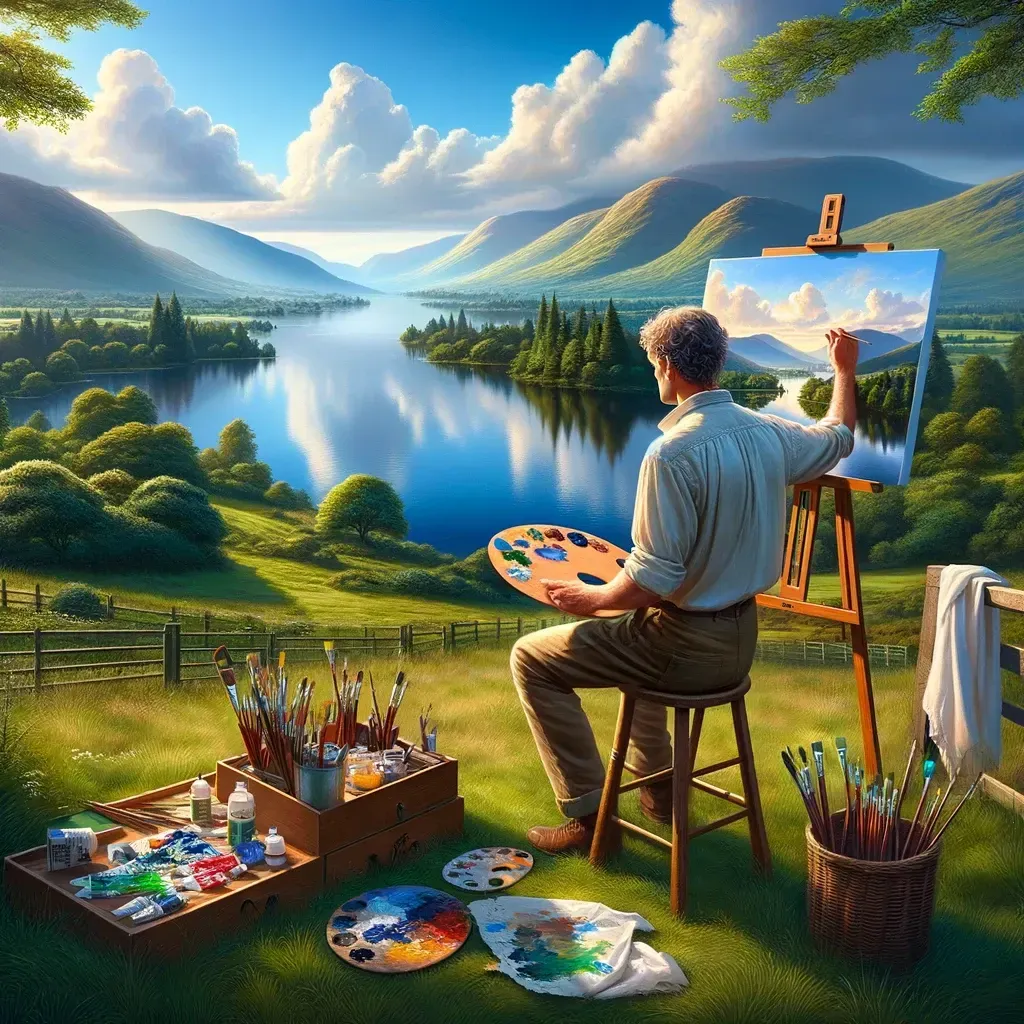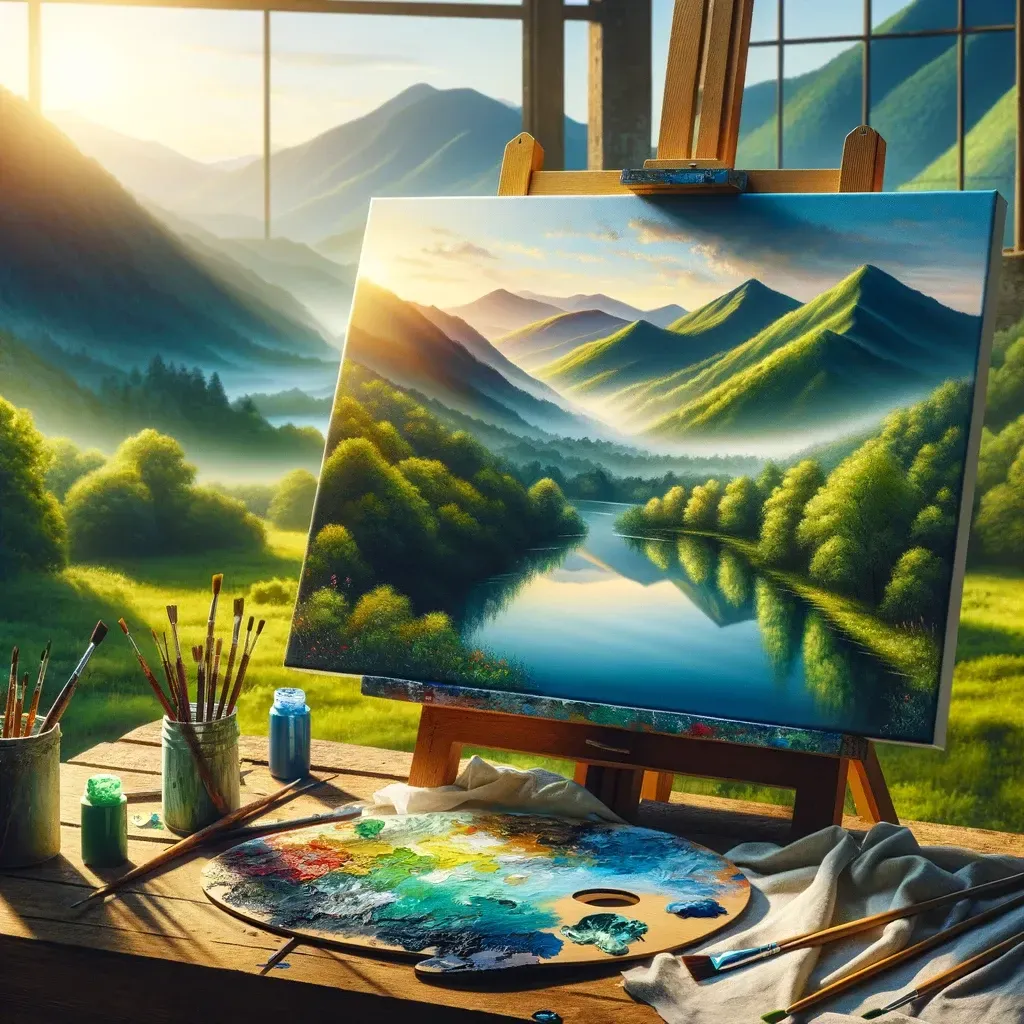Blog

By Swechha Baral
•
April 28, 2024
Landscape painting, more than being merely a visual treat, serves as a profound narrative device that artists have used across centuries to capture and communicate the essence of their times and cultures. From the pastoral hills of classical landscapes to the tumultuous skies of Romanticism, each work holds a story, a glimpse into the world as it was seen and experienced by its creators. This blog post explores the historical depths of famous landscape paintings and unravels the cultural and historical significance embedded within them. Landscapes of Antiquity: The Classical and Medieval Periods The tradition of depicting landscapes stretches back to ancient civilizations, where they often played secondary roles to religious or mythological themes. However, the appreciation of pure landscape began to emerge during the Renaissance, with artists like Albrecht Altdorfer and Pieter Bruegel the Elder. Altdorfer’s "The Battle of Alexander at Issus" (1529) juxtaposes a dramatic historical event with a vast and detailed landscape, suggesting the insignificance of human endeavors in the face of nature’s grandeur. This shift towards featuring landscapes in European art highlighted a growing appreciation for nature and its beauty, a theme that would carry forward into later periods. Renaissance Rebirth: Nature as a Reflection of Divine Beauty During the Renaissance, landscapes became symbolic backdrops for human activity, reflecting a harmony between humanity and the divine. Leonardo da Vinci’s studies of geological formations and atmospheric conditions not only informed his paintings like the "Mona Lisa" with its iconic, misty mountains but also demonstrated an advanced understanding of how landscapes could convey mood and emotion. These works reveal a period of intense observation and idealization of the natural world, with artists elevating nature as a mirror to human emotions and divine creation. Romantic Visions: Emotional Landscapes and National Identity The Romantic period marked a dramatic shift in the portrayal of landscapes. Artists like J.M.W. Turner and Caspar David Friedrich used landscapes to explore complex themes of emotion, spirituality, and national identity. Turner’s seascapes and stormy skies, often seen in works like “The Slave Ship” (1840), are imbued with a sense of sublime terror and beauty, reflecting the tumultuous political and social climate of his time. Friedrich’s “Wanderer above the Sea of Fog” (1818) uses the landscape as a metaphor for personal introspection and the quest for meaning, emblematic of Romanticism’s emphasis on the individual’s experience of the world. The Realism Reaction: Socio-political Narratives in Landscape In reaction to the idealized visions of Romanticism, the Realists of the 19th century, including artists like Gustave Courbet and Jean-François Millet, grounded their landscapes in the everyday realities of life. Courbet’s “The Stone Breakers” (1849) and Millet’s “The Gleaners” (1857) depict rural landscapes with a focus on the harsh lives of the laborers within them, critiquing the social inequalities of the time. These landscapes tell stories of struggle and endurance, highlighting the connection between the land and its inhabitants. Impressionist Innovations: Capturing Momentary Impressions The Impressionists, led by figures like Claude Monet and Camille Pissarro, revolutionized landscape painting by focusing on the transient effects of light and color. Monet’s series of “Haystacks” and “Water Lilies” capture fleeting moments in time, reflecting the rapid changes of the modern world. The loose brushwork and vibrant colors of Impressionist landscapes challenged traditional techniques and perceptions, emphasizing an immediate, sensory experience of the natural world. Modern Perspectives: Abstract and Symbolic Landscapes As the 20th century unfolded, artists increasingly abstracted the landscape to express modern realities and psychological states. Painters like Georgia O’Keeffe and David Hockney reimagined landscapes through intense colors and simplified forms, exploring themes of isolation, beauty, and transformation. O’Keeffe’s Southwestern series abstracts the desert landscape into a fusion of organic and geometric forms, reflecting her personal interpretation and emotional response to the environment. Conclusion: The Evolving Canvas of Landscape Art Historical landscape paintings provide more than just scenic views; they are rich texts awaiting interpretation, packed with insights into the periods and places from which they emerged. Each painting is a chapter in the broader story of human interaction with the environment, reflecting shifts in societal values, technological advancements, and aesthetic philosophies. As we continue to interpret these landscapes, we not only appreciate their beauty but also deepen our understanding of the human condition and the perpetual influence of nature in art.

By Swechha Baral
•
April 28, 2024
Art has long been recognized for its therapeutic properties, offering a sanctuary for the mind and a release for pent-up emotions. Among the various forms of art, painting nature scenes holds a special place in art therapy. This blog post delves into the soothing power of nature through the brush, exploring how painting and viewing landscapes can significantly impact mental health and well-being. Art Therapy and Mental Health Art therapy integrates psycho therapeutic techniques with the creative process to improve mental health and well-being. Participants express themselves through art, using colors, forms, and the act of painting to explore their emotions, reconcile emotional conflicts, foster self-awareness, manage behavior and addictions, develop social skills, improve reality orientation, reduce anxiety, and increase self-esteem. The act of focusing on a painting can help divert a person’s mind from stress and channel difficult emotions into a creative and productive activity. The Relaxing Power of Painting Nature Nature scenes, in particular, are powerful subjects within art therapy. The colors, textures, and inherent beauty of natural landscapes have a calming effect, making them ideal for therapeutic settings. Painting these scenes allows individuals to connect with nature and experience its tranquility, even if they are physically indoors. For many, these artistic endeavors serve as a form of escapism, offering a mental break from the complexities of life. The rhythmic strokes of the brush and the focus required to capture the essence of a landscape can be meditative, providing a respite for the mind and allowing it to reset and recover. Enhancing Well-being Through Creative Expression The benefits of engaging in landscape painting extend beyond the canvas. Regularly setting aside time to paint can establish a routine of mindfulness and relaxation. Participants often report feeling more grounded and calm after a painting session, highlighting the activity’s role in reducing symptoms of stress and anxiety. Moreover, viewing nature paintings can also have a soothing effect. Hospitals and healthcare settings frequently display landscape art for this reason, helping to create a healing environment that promotes recovery and peace.

By Swechha Baral
•
April 28, 2024
Welcome to the world of landscape painting, a rewarding artistic endeavor that allows you to capture the essence of the natural world. Whether you’re inspired by rolling hills, serene lakes, bustling cityscapes, or quiet forests, painting landscapes is a fantastic way to develop your artistic skills and deepen your appreciation for the outdoors. This guide is designed to help beginners get started with landscape painting, covering everything from choosing the right materials to selecting your subjects and mastering basic techniques.

By Swechha Baral
•
April 28, 2024
Welcome to our latest exploration where we delve into the beautiful synergy between art and nature. Here, we celebrate artists who not only capture scenic vistas but also interpret the emotional and spiritual essence of the natural world. Join us as we highlight some incredible talents in the realm of landscape and nature paintings.
